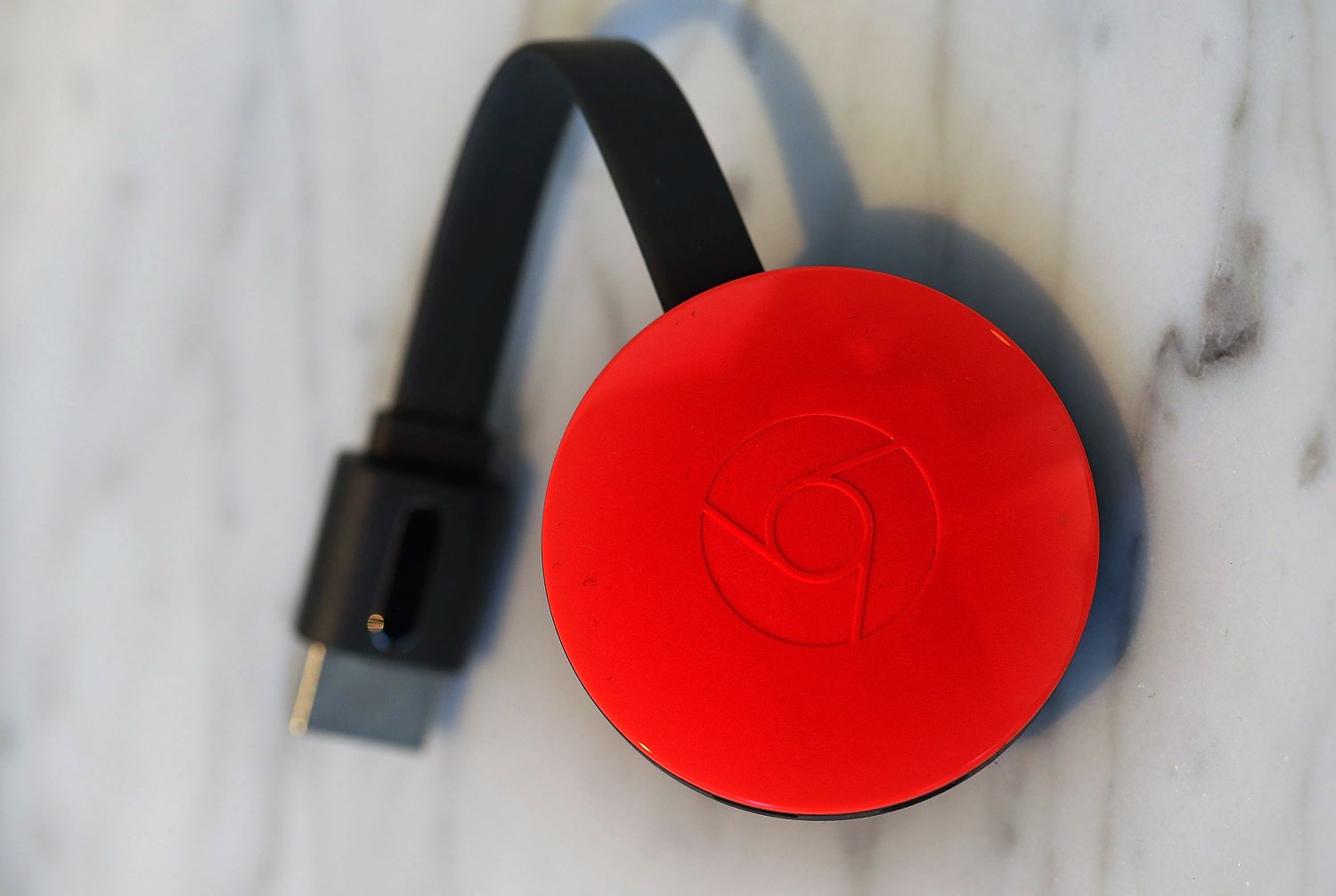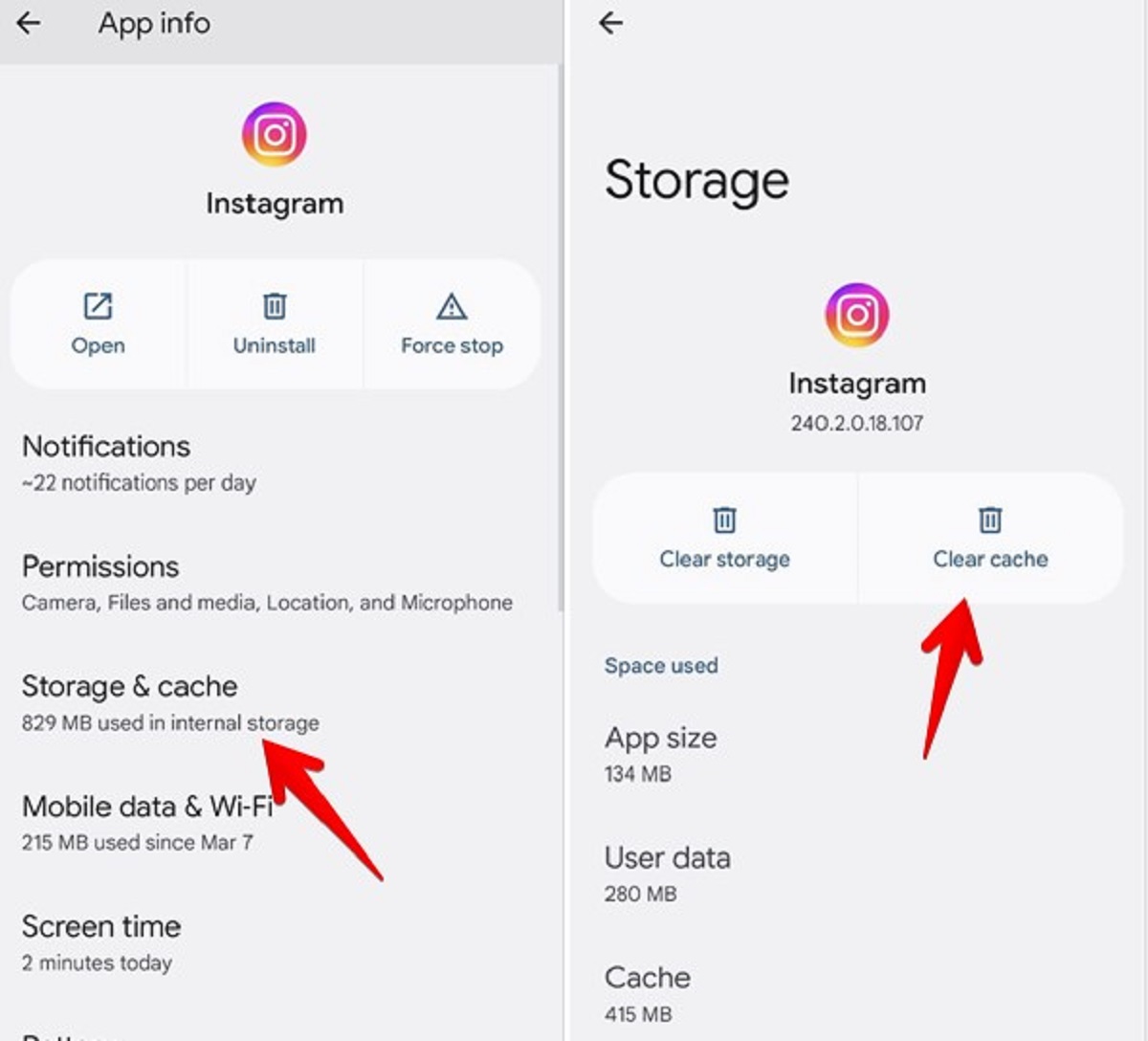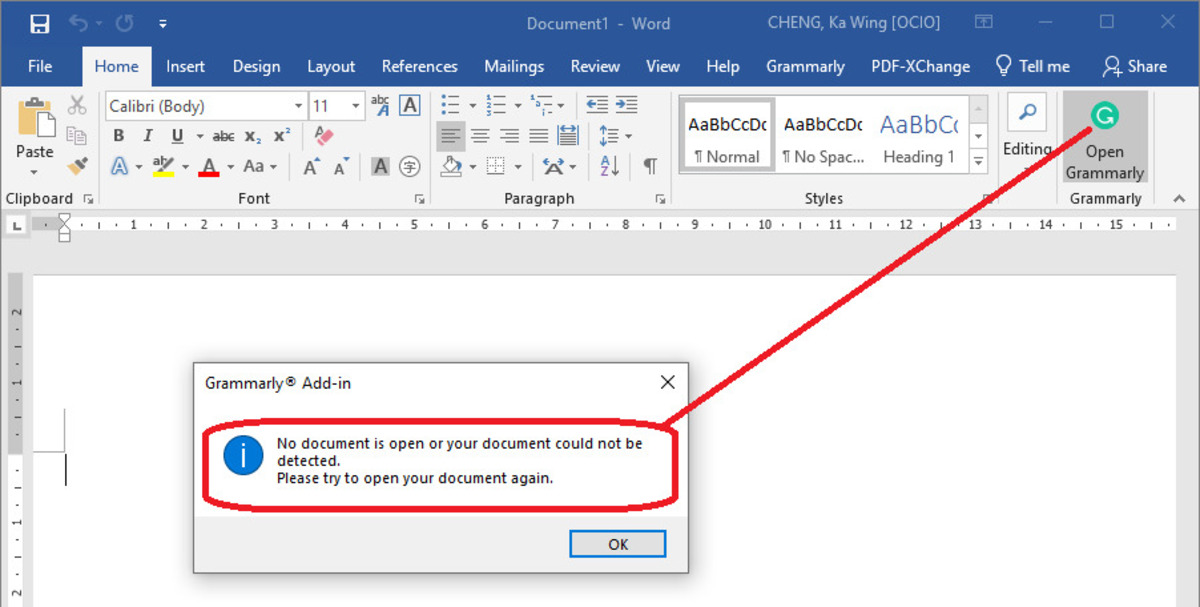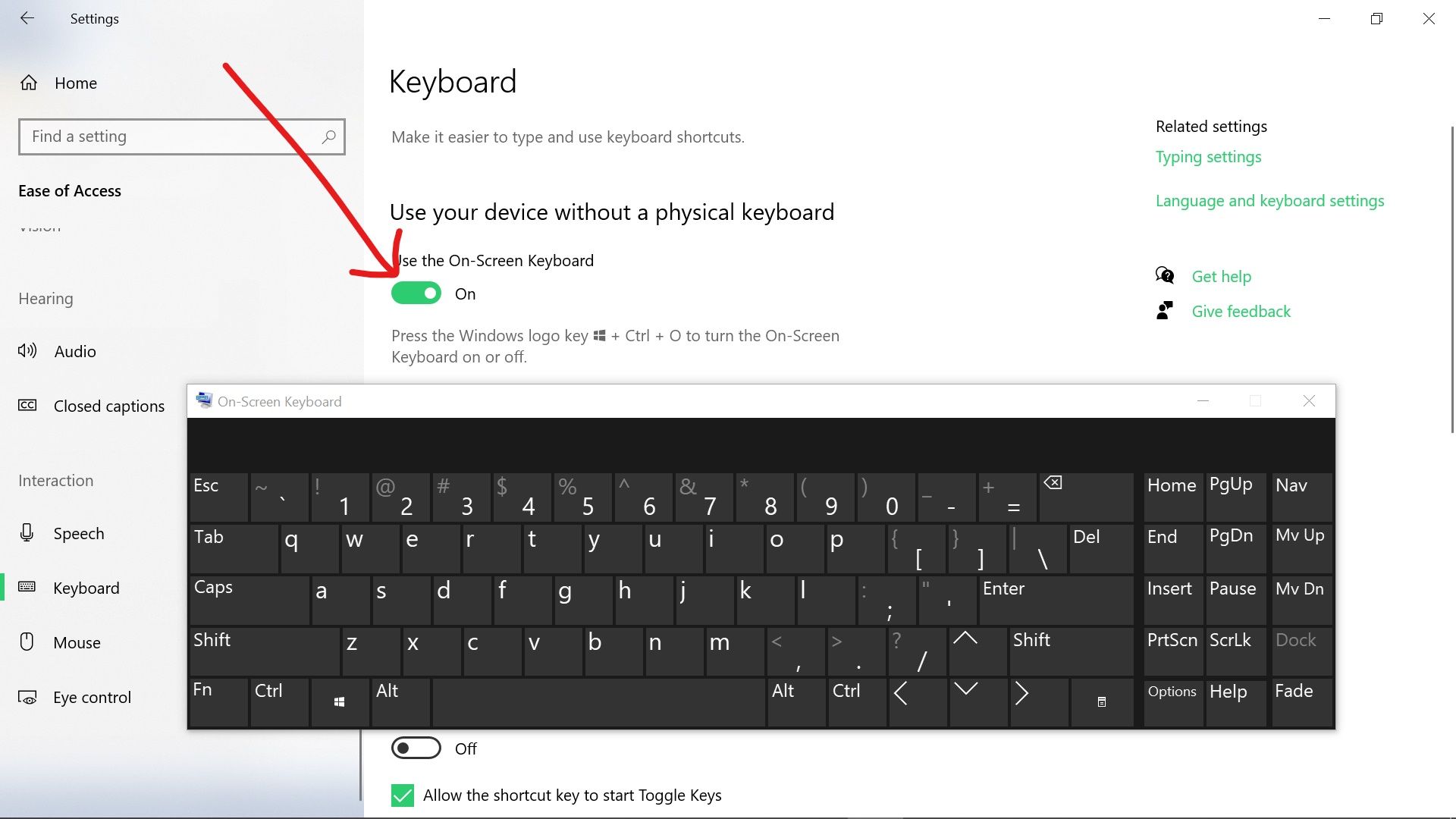Introduction
Wireless keyboards have become increasingly popular due to their convenience and clutter-free design. They offer flexibility and mobility, allowing users to work or play from a comfortable distance. However, like any electronic device, wireless keyboards can encounter issues that prevent them from functioning properly. If you’re facing difficulties with your wireless keyboard, you’re not alone.
In this article, we will explore common issues that can cause wireless keyboards to stop working and provide troubleshooting steps to help you get your keyboard back up and running. Whether you’re experiencing connectivity problems, battery issues, or driver conflicts, we will guide you through the steps needed to identify and resolve the problem.
Before we dive into the troubleshooting steps, it’s essential to understand that various factors can contribute to the malfunctioning of a wireless keyboard. Low battery power, connectivity issues, interference from other devices, driver problems, or even Bluetooth connection problems can all be responsible. By diagnosing and addressing these issues, you can regain the full functionality of your wireless keyboard.
So, if you’re frustrated and asking, “Why isn’t my wireless keyboard working?” don’t worry; we’re here to help you troubleshoot and find a solution. By following the tips and steps provided in this article, you’ll be able to identify and fix the issue, allowing you to continue using your wireless keyboard without any interruptions.
Common Issues
Wireless keyboards can face a range of common issues that can disrupt their functionality. Identifying these issues can help you troubleshoot and resolve the problem effectively. Here are some of the most frequently encountered problems:
- Low Battery: One of the most common causes of a non-functioning wireless keyboard is low battery power. If you notice that your keyboard is becoming unresponsive or keys are not registering, check the battery levels. Replace or recharge the batteries as needed to restore functionality.
- Connectivity Issues: Connectivity problems can occur with wireless keyboards, especially if there are obstacles or interference between the keyboard and its receiver. Make sure the receiver is connected properly to your computer and is within a reasonable range. Avoid placing the receiver near dense objects or electronic devices that may interfere with the signal.
- Interference: Other wireless devices operating on similar frequencies can interfere with the signal of your wireless keyboard. Devices such as cordless phones, routers, or even microwave ovens can cause interruptions. Keep these devices away from your keyboard or try changing the channel or frequency settings to minimize interference.
- Driver Problems: Outdated or corrupt keyboard drivers can prevent your wireless keyboard from functioning correctly. Make sure you have the latest drivers installed for your keyboard model. You can usually find the drivers on the manufacturer’s website or by using the automatic driver update feature on your computer.
- Bluetooth Connection Problems: If you’re using a Bluetooth-enabled wireless keyboard, connection issues may arise. Make sure Bluetooth is enabled on your computer and that the keyboard is paired correctly. Try disconnecting and reconnecting the keyboard to establish a new connection.
By understanding these common issues, you can narrow down the potential causes of your wireless keyboard problems. In the next section, we will provide troubleshooting steps to help you resolve these issues and get your wireless keyboard back in working order.
Low Battery
One of the most common reasons for a malfunctioning wireless keyboard is low battery power. If your keyboard is not functioning properly or keys are not responding, it’s essential to check the battery levels. Here’s how to address low battery issues:
- First, check if your wireless keyboard has an LED indicator for battery life. If it does, observe the LED to see if it is blinking or showing a low battery signal. This will indicate that the batteries need to be replaced or recharged.
- If the keyboard does not have an LED indicator, you can manually check the battery levels. Open the battery compartment of the keyboard and remove the batteries. Check if they are drained or corroded. Replace the batteries with fresh ones, ensuring they are properly inserted in the correct polarity.
- Ensure that you are using the recommended type of batteries for your wireless keyboard. Different models may require different types, such as AA or AAA batteries. Using the wrong type of battery can compromise the keyboard’s performance.
- Consider using rechargeable batteries if you frequently experience low battery issues. Rechargeable batteries can save you money and are more environmentally friendly.
It’s important to note that even if the batteries are not completely drained, they may still not provide sufficient power for the keyboard to function correctly. In such cases, it is advisable to replace the batteries to eliminate low battery as a potential cause of the problem.
By addressing low battery issues, you can restore the functionality of your wireless keyboard. However, if the issue persists even after replacing the batteries, there may be other underlying causes that need to be addressed. In the next sections, we will explore other troubleshooting steps to diagnose and resolve connectivity, interference, driver, and Bluetooth-related issues that may be impacting your wireless keyboard.
Connectivity Issues
Connectivity problems can be another common issue with wireless keyboards. If you’re experiencing intermittent or no connection between your keyboard and computer, follow these steps to troubleshoot and resolve connectivity issues:
- Check the physical connection of the wireless receiver. Ensure that it is properly connected to a USB port on your computer. If you’re using a USB hub, try connecting the receiver directly to a USB port on the computer to rule out any issues with the hub.
- Verify that the wireless receiver is within the range of the keyboard. Wireless keyboards typically have a specified operating range, so ensure that you are within the specified distance. Move closer to the receiver and try using the keyboard again.
- Avoid placing the receiver near dense objects or other electronic devices that may interfere with the signal. Metal surfaces, walls, and other wireless devices like cordless phones or routers can impact the connectivity of your wireless keyboard. Move any potential sources of interference away from the keyboard and receiver.
- If your wireless keyboard includes a connect button, try pressing it to establish a new connection between the keyboard and receiver. Consult your keyboard’s manual for instructions on the proper procedure for reconnecting the devices.
If none of the above steps resolve the connectivity issues, try using the wireless receiver with another computer. This will help determine if the issue lies with the receiver or the computer itself. If the keyboard works with a different computer, there may be a compatibility issue or an underlying problem with the USB ports on your original computer.
By addressing connectivity issues, you can restore the seamless connection between your wireless keyboard and computer. However, if the problem persists, it may indicate a more complex issue that requires further troubleshooting or professional assistance.
Interference
Interference from other devices can be a common culprit behind wireless keyboard connectivity issues. If you’re experiencing frequent disconnections or unresponsive keys, it’s possible that other devices are interfering with the signal. Here are some steps to help you minimize interference:
- Check for nearby devices that may be operating on similar frequencies, such as cordless phones, routers, or microwave ovens. These devices can emit signals that interfere with the wireless keyboard’s signal. Try to keep these devices away from your keyboard and receiver.
- If your wireless keyboard uses a USB receiver, try using a USB extension cable to position the receiver at a different location. Sometimes, simply moving the receiver away from potential sources of interference can improve connectivity.
- Some wireless keyboards allow you to change the channel or frequency they operate on. Consult your keyboard’s manual to see if this is a feature available to you. Changing the channel or frequency can help avoid conflicts with other nearby devices.
- Using a keyboard with Bluetooth technology can also help minimize interference from other devices. Bluetooth operates on a different frequency range and typically has a stronger signal, reducing the likelihood of interference.
By taking these steps to minimize interference, you can improve the wireless connectivity of your keyboard. However, if the problem persists, it may indicate other underlying issues that need to be addressed.
Next, we will explore troubleshooting steps related to driver problems and Bluetooth connection issues that may be affecting your wireless keyboard’s functionality. These steps can help you identify and resolve issues that are not related to battery power or interference, further narrowing down the potential causes of the problem.
Driver Problems
Outdated or faulty drivers can often cause issues with the functionality of your wireless keyboard. If your keyboard is unresponsive or behaving erratically, it’s essential to check and update the keyboard drivers. Here’s what you can do:
- Start by checking if there are any available driver updates for your keyboard model. Visit the manufacturer’s website and navigate to the support or downloads section. Look for the latest drivers specific to your keyboard model and operating system.
- Download and install the updated drivers following the manufacturer’s instructions. It’s always recommended to download drivers directly from the manufacturer’s website to ensure their authenticity and compatibility.
- If you are using a generic or plug-and-play keyboard, your computer may automatically install the appropriate drivers upon connecting. However, it’s still worth checking for any available driver updates on the manufacturer’s website.
- If you recently updated your operating system, the keyboard drivers may have become incompatible. In such cases, visit the manufacturer’s website to see if they have released updated drivers that are compatible with the new OS version.
- If you are unsure about the specific driver version you need, you can also use driver updating software. These programs can automatically scan your computer, detect outdated drivers, and download and install the latest versions for you.
Updating the keyboard drivers can often resolve compatibility issues and improve the overall performance of your wireless keyboard. However, if the problem persists even after updating the drivers, there may be other factors affecting the functionality.
In the next section, we will delve into troubleshooting steps related to Bluetooth connectivity, which is applicable if you are using a Bluetooth-enabled wireless keyboard. These steps can help you resolve connection problems specific to Bluetooth keyboards.
Bluetooth Connection Problems
If you are using a Bluetooth-enabled wireless keyboard, you may encounter connection issues specific to Bluetooth technology. Here are some troubleshooting steps to help you address Bluetooth connection problems:
- Ensure that the Bluetooth feature is enabled on your computer. Check your device settings or system preferences to confirm that Bluetooth is turned on and available for pairing.
- Put your wireless keyboard in pairing mode. Depending on the model, this may involve pressing a specific key combination or using a dedicated pairing button. Consult the keyboard’s manual for the exact instructions.
- On your computer, access the Bluetooth settings and search for available devices. Your wireless keyboard should appear in the list. Select it and initiate the pairing process.
- Follow any on-screen prompts or enter the provided passcode, if necessary, to complete the pairing process. The keyboard should now be connected to your computer via Bluetooth.
- If the pairing fails or if the connection remains unstable, try removing the keyboard from the Bluetooth devices list on your computer. Then, repeat the pairing process from scratch.
- Ensure that there are no other Bluetooth devices nearby that might be causing interference. If possible, temporarily turn off or move other Bluetooth devices away from your keyboard and computer.
- Make sure that your computer’s Bluetooth drivers are up to date. Visit the manufacturer’s website or use driver updating software to check for and install any available Bluetooth driver updates.
- If you still experience issues, try restarting your computer and repeating the pairing process. Sometimes, a simple restart can resolve temporary Bluetooth connectivity problems.
By following these troubleshooting steps, you can address Bluetooth connection problems and establish a stable connection between your wireless keyboard and computer. However, if the issue persists despite these efforts, there may be other underlying factors affecting the Bluetooth connectivity.
Now that we’ve covered troubleshooting steps for common wireless keyboard issues, it’s important to remember to reach out for professional assistance if none of the solutions provided have resolved the problem.
Troubleshooting Steps
When faced with issues regarding your wireless keyboard, there are several troubleshooting steps you can take to diagnose and resolve the problem. Follow these steps to get your keyboard back up and running:
- Restart Your Computer: A simple restart can often resolve minor software or connectivity issues. Restarting your computer can refresh the system and restore normal functionality.
- Check Battery Levels: Low battery power can cause your wireless keyboard to malfunction. Check the battery levels and replace or recharge them as needed to ensure optimal performance.
- Re-pair Your Keyboard: If you’re experiencing connectivity issues, try unpairing and re-pairing your wireless keyboard. This can establish a fresh connection and resolve any connection-related problems.
- Update Your Drivers: Outdated or faulty drivers can hinder the performance of your wireless keyboard. Check for driver updates on the manufacturer’s website and install the latest versions for your keyboard model.
- Reset Bluetooth Settings: If you’re using a Bluetooth-enabled keyboard, resetting the Bluetooth settings on your computer can help resolve connection problems. Remove the keyboard from your known Bluetooth devices and re-pair it.
By following these troubleshooting steps, you can identify and tackle common issues that may prevent your wireless keyboard from functioning properly. However, it’s important to note that complex or persistent problems may require professional assistance or further troubleshooting steps.
If you have followed these troubleshooting steps and are still experiencing issues with your wireless keyboard, it may be helpful to consult the manufacturer’s support resources or contact their customer support for further guidance.
Remember, patience and persistence are key when troubleshooting any technical issues. By diligently working through the steps, you increase your chances of resolving the problem and getting your wireless keyboard back to its optimal performance.
Restart Your Computer
When faced with issues related to your wireless keyboard, one of the simplest yet effective troubleshooting steps is to restart your computer. Restarting can help resolve minor software glitches and refresh system settings, potentially resolving the problem with your keyboard. Here’s how to perform a restart:
- Save any unsaved work and close all open applications and programs.
- Click on the “Start” menu in the bottom left corner of your desktop.
- Select the “Power” option from the menu that appears.
- In the dropdown menu, choose “Restart”.
- Wait for your computer to shut down and reboot itself.
Once your computer has restarted, test the functionality of your wireless keyboard. Check if the keys are responding and if the connection is stable. Often, a fresh start can resolve temporary issues that may have been affecting your keyboard’s performance.
If the problem persists after restarting your computer, move on to the other troubleshooting steps provided in this article. Remember to follow each step carefully and continue troubleshooting until you find a resolution.
In some cases, a restart alone may not be enough to resolve the problem, especially if it’s caused by more complex factors like driver conflicts or hardware issues. If that’s the case, don’t worry – the subsequent troubleshooting steps will provide further guidance to help you diagnose and fix the issue.
By restarting your computer, you give it a chance to refresh the system, clear any temporary glitches, and potentially restore the proper functioning of your wireless keyboard. It’s an essential step to address minor software-related issues and should be one of the first troubleshooting steps to try.
Check Battery Levels
One of the most common causes of wireless keyboard issues is low battery power. If your wireless keyboard is not functioning properly or certain keys are unresponsive, it is crucial to check the battery levels. Here’s how to check and address low battery problems:
- Look for an LED indicator on your wireless keyboard that displays the battery life. If you see a blinking light or a low battery icon, it is a clear indication that the batteries need to be replaced or recharged.
- If your keyboard does not have a battery indicator, open the battery compartment on the back or underside of the keyboard. Carefully remove the existing batteries.
- Inspect the batteries for any signs of corrosion or leakage, as these can affect the performance of your keyboard. If you notice any damage, discard the batteries and replace them with fresh ones.
- Confirm that you are using the correct type of batteries recommended for your wireless keyboard. Different models may require AA, AAA, or rechargeable batteries. Using the wrong type can result in poor performance or no response.
- If you have rechargeable batteries, they may need to be recharged. Remove the batteries from the keyboard and place them in a compatible charger. Follow the manufacturer’s instructions to ensure proper charging.
- Once the batteries are replaced or recharged, insert them back into the keyboard, ensuring proper polarity. Close the battery compartment securely.
After checking and addressing the battery levels, test the functionality of your wireless keyboard. Press various keys to ensure that they respond correctly. A fresh set of batteries can often resolve issues arising from low power.
Remember, it’s always a good idea to keep spare batteries on hand so that you can easily replace them when needed. Regularly checking the battery levels of your wireless keyboard can help prevent unexpected interruptions in functionality.
If the battery levels were not the cause of the problem, move on to the other troubleshooting steps provided in this article. We will explore other potential issues and solutions to help you diagnose and resolve your wireless keyboard problems.
Re-pair Your Keyboard
If you are experiencing connectivity issues with your wireless keyboard, re-pairing it with the receiver or your computer can help establish a fresh and stable connection. Here’s how to re-pair your keyboard:
- Start by turning off your wireless keyboard.
- Next, locate the wireless receiver that is connected to your computer. Depending on the model, it may be a USB dongle or a built-in receiver. If your keyboard is Bluetooth-enabled, skip this step.
- If your wireless keyboard has a connect button, press and hold it until the LED indicator starts flashing. This puts the keyboard into pairing mode.
- For USB receivers, remove the receiver from the USB port and wait for a few seconds before inserting it back in. This can help reset the connection between the keyboard and the receiver.
- Now, turn on your wireless keyboard and wait for it to be recognized by the receiver or your computer.
- If prompted, enter any necessary passcodes or follow the on-screen instructions to complete the pairing process.
- Once the re-pairing process is complete, test your keyboard to ensure that it is functioning correctly.
Re-pairing your keyboard can resolve connectivity issues that may have arisen due to a loss of connection or interference. By establishing a fresh connection, you may be able to restore the full functionality of your wireless keyboard.
If your wireless keyboard is Bluetooth-enabled, you may need to go into the Bluetooth settings on your computer or device to remove the keyboard from the list of paired devices. After removing it, initiate the pairing process again to re-establish the connection.
If re-pairing your keyboard does not resolve the connectivity issues, you can proceed with the other troubleshooting steps mentioned in this article. These steps will help you identify and address potential underlying causes of the problem.
Remember, it’s always beneficial to read the instruction manual or consult the manufacturer’s website for specific re-pairing instructions tailored to your wireless keyboard model.
Update Your Drivers
Outdated or incompatible drivers can often result in issues with the functionality of your wireless keyboard. Updating the drivers can help resolve these problems and ensure smooth operation. Here’s how you can update the drivers for your keyboard:
- Start by identifying the manufacturer and model of your wireless keyboard. This information can usually be found on the keyboard itself or in the user manual.
- Visit the manufacturer’s official website and navigate to the support or downloads section. Look for the latest drivers available for your keyboard model.
- Download the appropriate driver for your operating system. Be sure to select the correct version, such as Windows or macOS.
- Once the driver is downloaded, run the installer and follow the on-screen instructions to complete the installation process.
- After the driver update is complete, restart your computer to ensure that the changes take effect.
Alternatively, you can use driver update software that can automatically scan your computer for outdated drivers and download the latest versions. These programs can simplify the process and ensure that you have the most up-to-date drivers installed for your wireless keyboard.
Updating the drivers can resolve compatibility issues and improve the performance of your wireless keyboard. It’s important to regularly check for driver updates, especially after system updates or when experiencing issues with your keyboard.
If you are unable to find drivers on the manufacturer’s website or through driver update software, you can also try uninstalling the current drivers completely and letting your operating system reinstall them automatically. This can be done through the Device Manager in Windows or the System Preferences on macOS.
By keeping your drivers updated, you can optimize the performance of your wireless keyboard and minimize issues related to compatibility or outdated software.
If updating the drivers does not resolve the problem, continue with the other troubleshooting steps provided in this article. We will explore additional solutions to help diagnose and address any remaining issues with your wireless keyboard.
Reset Bluetooth Settings
If you’re using a Bluetooth-enabled wireless keyboard and experiencing connection problems, resetting the Bluetooth settings on your computer can help resolve the issue. Here’s how to reset Bluetooth settings:
- First, open the settings on your computer or device that manages Bluetooth connections. This may be called “Bluetooth settings” or “Bluetooth preferences” and can usually be found in the system tray or system preferences.
- Locate the list of paired devices and find your wireless keyboard. Select the keyboard and choose the option to “Forget” or “Remove” it from the list of paired devices. This will clear the existing Bluetooth connection.
- Next, turn off Bluetooth on your computer or device. The process for disabling Bluetooth may vary depending on the operating system. Refer to your device’s documentation for specific instructions.
- Leave Bluetooth turned off for a few seconds to ensure a complete reset of the settings.
- After the wait time, turn Bluetooth back on and navigate back to the Bluetooth settings.
- Put your wireless keyboard into pairing mode. This process may involve pressing a specific key combination or using a dedicated pairing button. Consult your keyboard’s manual for the exact instructions.
- Select the option to “Add” or “Pair” a device in your Bluetooth settings. Your computer should detect the wireless keyboard in pairing mode.
- Follow any additional on-screen prompts or enter the provided passcode, if necessary, to complete the pairing process.
By resetting the Bluetooth settings and reconnecting your wireless keyboard, you can establish a fresh connection that may resolve any previous connectivity issues. This allows your computer to recognize and communicate properly with the keyboard.
Remember to consult your keyboard’s manual for any specific instructions on re-pairing or clearing Bluetooth settings. The exact steps may vary depending on the make and model of your wireless keyboard.
If resetting the Bluetooth settings does not resolve the problem, try the other troubleshooting steps provided in this article to further diagnose and address any remaining issues with your wireless keyboard.
Conclusion
Wireless keyboards offer flexibility and convenience, but they can encounter various issues that may hinder their functionality. By understanding common problems and following the troubleshooting steps outlined in this article, you can effectively resolve many wireless keyboard issues.
We explored common issues such as low battery power, connectivity problems, interference, driver conflicts, and Bluetooth connection issues. Additionally, we provided step-by-step instructions on how to address each of these problems, including restarting your computer, checking battery levels, re-pairing your keyboard, updating drivers, and resetting Bluetooth settings.
Remember to exercise patience and persistence when troubleshooting your wireless keyboard. Some issues may require multiple attempts or further investigation. If the problem persists even after following the troubleshooting steps, consider seeking professional assistance or reaching out to the manufacturer for support.
Regular maintenance, such as checking battery levels and keeping drivers up to date, can help prevent future issues with your wireless keyboard. Additionally, avoiding interference from other devices and ensuring a stable Bluetooth connection are important for maintaining optimal functionality.
With the troubleshooting steps and tips provided here, you are equipped to overcome common wireless keyboard issues. By being proactive and following the guidelines outlined in this article, you can enjoy uninterrupted and efficient use of your wireless keyboard.

























